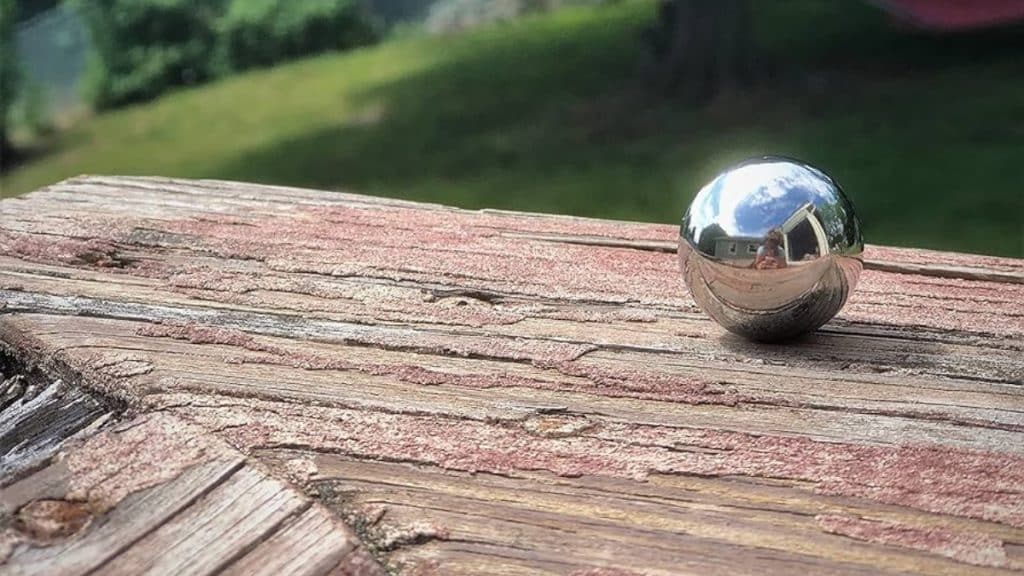Titanium, named after the Titans of Greek mythology, is one of the strongest metals on Earth. Although titanium is not a rare metal, its relatively high mining and production costs make it expensive. You may have heard of titanium being used in artificial joints, golf clubs, or submarines, but did you know that titanium is even hidden in white cake frosting? Let’s explore the fascinating story of this resilient metal!
1. The Discovery and Early Development of Titanium
The story of titanium begins in 1791, when British mineralogist and clergyman William Gregor discovered some peculiar black sand in a stream near Cornwall. Part of this black sand was magnetic, and Gregor identified it as containing iron oxide, but another substance puzzled him. It wasn’t until 1795 that German chemist Martin Heinrich Klaproth rediscovered this oxide and named it titanium oxide after the Greek gods.
Although titanium was discovered in the late 18th century, it wasn’t until 1910 that Matthew Hunter, a chemist at General Electric in the United States, successfully extracted pure titanium from its oxide under high temperature and pressure. This breakthrough opened the door to titanium’s widespread use in industry and science.
2. The Lightest and Strongest Metal
Pure titanium has the highest strength-to-weight ratio of any metal on Earth. Compared to steel, titanium is not only strong but also about 45% lighter. This exceptional performance makes titanium and its alloys the material of choice for high-performance equipment such as aircraft engines, airframes, rockets, missiles, and spacecraft. For example, the Airbus A380, the world’s largest passenger aircraft, contains up to 77 tons of titanium, primarily used in its massive engines.
In the 1930s, a metallurgical innovation called the “Kroll process” enabled the commercial forging of titanium to fully take off in the 1940s and 1950s. Initially, titanium was mainly used in military aircraft and submarines, and by the 1960s, it began to be applied in commercial aviation.
3. Exceptional Corrosion Resistance
Titanium’s surface is covered with a thin layer of titanium dioxide (TiO₂), which gives it excellent corrosion resistance in various environments. Whether in air or seawater, titanium is resistant to oxidation and corrosion. This property not only makes titanium an ideal material for aircraft but also ensures its outstanding performance in high-corrosion environments such as underwater components, ship propellers, ballast systems, and pipelines.
4. Titanium in Medicine
The titanium dioxide layer not only provides titanium with excellent corrosion resistance but also makes it an ideal material for human implants. Titanium is completely “biocompatible,” non-toxic, and does not cause allergies or rejection, allowing it to naturally integrate with human tissues and bones.
Titanium is widely used in bone and joint implants, cranial plates, dental implants, artificial eyes and ear pins, heart valves, spinal fusion, and the treatment of urethral strictures. Research shows that titanium implants promote bone growth on their surfaces, a process known as osseointegration. As a result, titanium has become the material of choice for hip replacements and bone screws, reducing the weight of implants while offering elasticity similar to human bones.
5. Titanium in Sports Equipment
As the price of titanium declined in the late 20th century, manufacturers began exploring more commercial applications, particularly in sports equipment. Titanium’s lightweight and high strength make it an ideal choice for high-performance sporting goods.
Titanium alloy golf clubs first appeared in the mid-1990s, such as Callaway’s titanium drivers. Despite their higher cost, their superior performance prompted other sports equipment manufacturers to adopt titanium. Today, titanium is widely used in tennis rackets, hockey sticks, skis, bicycle frames, baseball bats, hiking and climbing gear, camping equipment, and even horseshoes for professional racehorses.
6. Titanium in White Pigments
Approximately 6.3 million tons of titanium are produced globally each year, with only 5% used for forging into metal. The majority is converted into titanium dioxide, a non-toxic whitening pigment widely used in paints, cosmetics, pharmaceuticals, and food, including white cake frosting.
In the past, white paints often contained lead pigments, but due to the health risks of lead, titanium dioxide has gradually replaced them. Titanium-based pigments are not only corrosion-resistant and durable but also have an extremely high refractive index, displaying a natural luster stronger than diamonds and a particularly bright white hue. Additionally, titanium dioxide reflects infrared light, making it commonly used in the exterior coatings of solar observatories to disperse infrared light that could affect image clarity.
The architectural field has also fully utilized titanium’s unique properties. For example, architect Frank Gehry used 33,000 titanium panels to decorate the exterior of the Guggenheim Museum in Bilbao. These panels change color and brightness under different lighting conditions, making the museum’s exterior shine and creating a classic work of architectural art.
